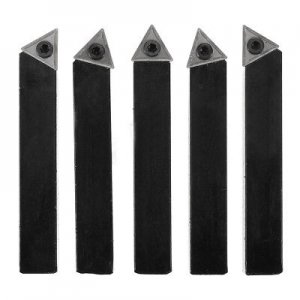If you are observing "cut lines" the feed rate is too much for the radius of the tool.
Plus the tool may not be correct.
Meaning if you are cutting from right to left the left side of the tool is doing the cutting.
Many may have a pointed tool like a 60 degree thread cutting tool that due to the point they can cut grooves or threads instead of removing material.
Aluminum can be nasty stuff and dawn works wonders but can cause rust.
ATF works very good on lots of things and with it giving a high detergent level cleanup is easy and the machine will be cleaner with ease use and wipe down.
Sent from my SAMSUNG-SGH-I337Z using Tapatalk
Plus the tool may not be correct.
Meaning if you are cutting from right to left the left side of the tool is doing the cutting.
Many may have a pointed tool like a 60 degree thread cutting tool that due to the point they can cut grooves or threads instead of removing material.
Aluminum can be nasty stuff and dawn works wonders but can cause rust.
ATF works very good on lots of things and with it giving a high detergent level cleanup is easy and the machine will be cleaner with ease use and wipe down.
Sent from my SAMSUNG-SGH-I337Z using Tapatalk

